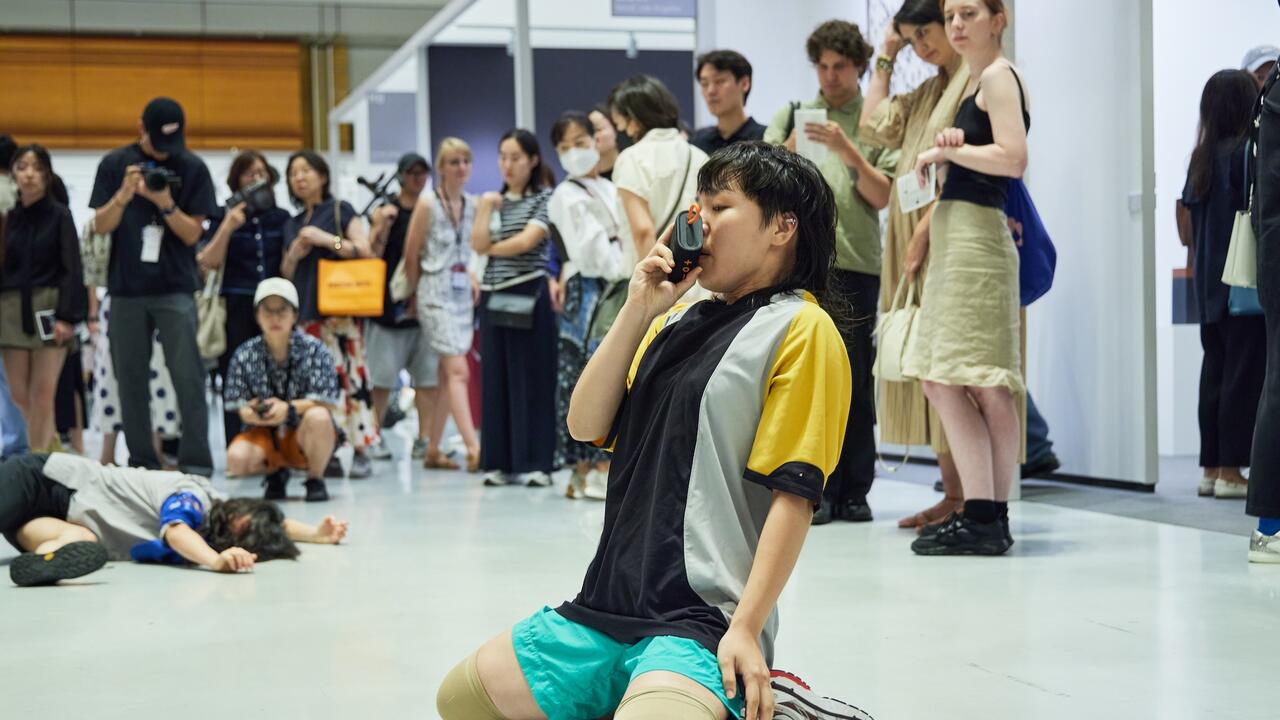Alan Stanners
At Outpost Gallery, Norwich, Alan Stanners presents 12 paintings alongside a manifesto that attempts to enliven a seemingly sclerotic art practice
At Outpost Gallery, Norwich, Alan Stanners presents 12 paintings alongside a manifesto that attempts to enliven a seemingly sclerotic art practice
Exhibited alongside 12 of his paintings, Alan Stanners presents Qualmlessist Manifesto (2011). Framed and printed on pink paper, its 23 declarations are central to his current practice. They announce the young Norwich-based artist’s sentiment – ‘Qualmlessism will piss where it wants to’ – and sets the overall tone of the exhibition, his biggest solo show to date: ‘Qualmlessism will not tolerate fetishists of genre or perverts of style.’

As well as a tongue-in-cheek take on similar declarations of the early 20th century, Stanners’ manifesto, like those that came before it, is a device to set creativity flowing anew. Less a proselytizing gesture, it’s an individual’s attempt to animate and enliven a seemingly sclerotic art practice. The result of which is a collection of works with little other than a manifesto in common, painted using a variety of disparate styles and techniques.
Qualmlessism (2011) is a typographical experiment painted in muddy Picabia-greys and lacklustre Braque-browns that further asserts Stanners’ clumsy neologism. Crudely finished in broad, visible brushstrokes, it reiterates the contemporary distaste for anything suffixed with an -ism, echoing Dada’s predilection for nonsense words and self-deprecating humour.

Quick Response (2011) best represents the manifesto’s anything-goes attitude. Not only is it a representation of a QR Code, perhaps one of the most visually ill-advised inventions of any media, Stanners has taken certain artistic liberties in rendering it, giving it alternative, non-square dimensions, and painting it in vibrant blues and purples. While scrimping on realism, Stanners encourages an ironic comparison between the QR Code and De Stijl-era grids, drawing similarities between the encryption of mediated information and the development of abstraction in modern painting.
Elsewhere, Stanners further combines representation with abstraction, placing familiar objects against planes of colour and gestural brushstrokes. In X (2011), a pair of splayed kitchen scissors are set against a lively background; the words ‘action must be taken’ have been repeatedly scrawled in the familiar Qualmlessist script around the painting’s edge. What might have been a convincing imperative to act is muted by the domestic nature of the scissors and its considerately ergonomic handles, and once again we’re reminded of the contemporary inability to bear conviction.

Tellingly, the earliest work shown here, Headless Shoulders (2010), least associates itself with the represented world, and aside from its title is more or less entirely abstract. It comprises a cluster of painterly marks surrounded by three colour planes broken at points by overspill from the gestural area. Its composition encourages the eye upwards, while the sphere at the bottom right is rendered in such a way that it pulls the gaze back down again. In this way, Headless Shoulders keeps you entirely devoted to its painterly surface.
Similarly captivating is Blue Swan (2011), in which an economy of brushstrokes produces what seems to be a typographical chimera that simultaneously looks like the first two vowels of the alphabet. Its apparent familiarity at once draws you in, while it’s subsequent illegibility leaves you floundering – the title seems like a red herring, leading you further off the track. It is here that Stanners truly encapsulates the sentiment of the punning Dadaist whose representations are rarely unequivocal and who always invites bewilderment. What's more, it is here that Stanners marries a forthright approach to materials – his decisive use of paint – with an elusive subject matter that lies always on the cusp of representation.

The deceptive nature of works like Blue Swan was played out by the exhibition as a whole. With the heterogeneity of paintings on show and only the manifesto – which is itself duplicitous – grounding the disparate styles and techniques, the show was inherently elusive. Never settling on one particular mode of painting, Stanners offers a cynical account of the avant-garde legacy, implied by the exhibition’s title: ‘No Vacancy’.























